1 big thing: The short shelf life of political will
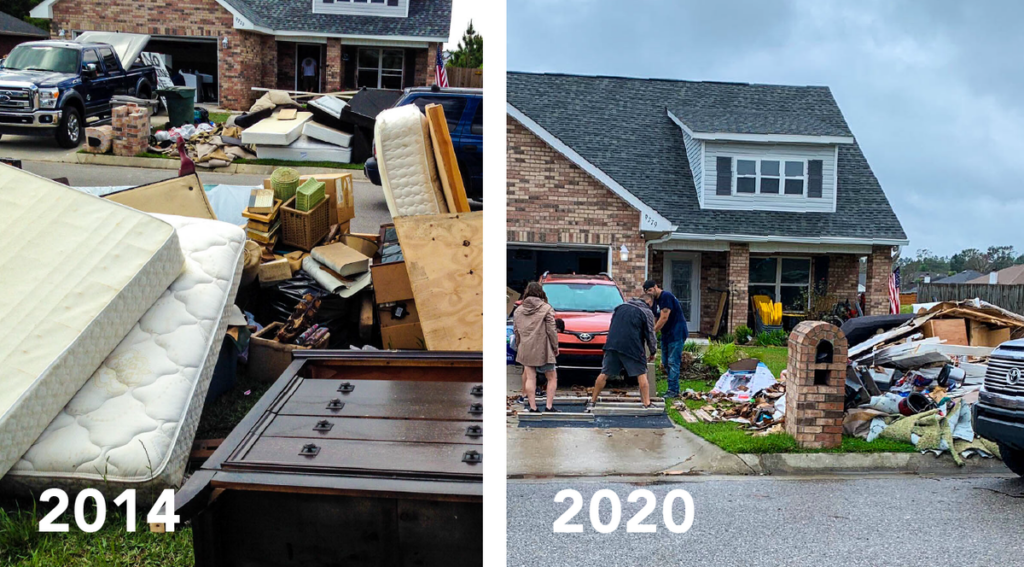
One of many Escambia County homes devastated by repeat flooding while drainage solutions go unfunded. (Credit: Spencer Blomquist)
Two “100-year” floods have hit Escambia County with massive flood damage in the last seven years, but most local officials haven’t found the motivation — or money — to get ready for the next one.
- The lesson: There will be a next one. Escambia is one of many vulnerable areas across Florida where flood risks — and the urgent need for expensive preventive measures — are increasing.
The problem: “The only time stormwater is sexy is right after a storm,” said the county’s former stormwater engineering manager Chris Curb.
- After a 2014 storm unleashed almost two feet of water in 24 hours, the county rallied around an ambitious plan to protect schools, churches and homes, but failed to raise its $417 million price tag.
- When Hurricane Sally hit in 2020, the county had only raised $40 million and finished 11 of 228 planned drainage projects.
As hard as it is to prioritize funding to prevent flood damage, fixing it afterward — over and over again — causes a lot more pain.
- Sally alone cost the county nearly $312 million in damage.
- Another $105 million would have paid for the county’s entire stormwater plan, girding it against Sally and future storms.
The takeaway: Flooding is a natural disaster, but the devastation it leaves behind is a human one we can avoid with common sense and proactive solutions.
2. The lasting costs of inaction
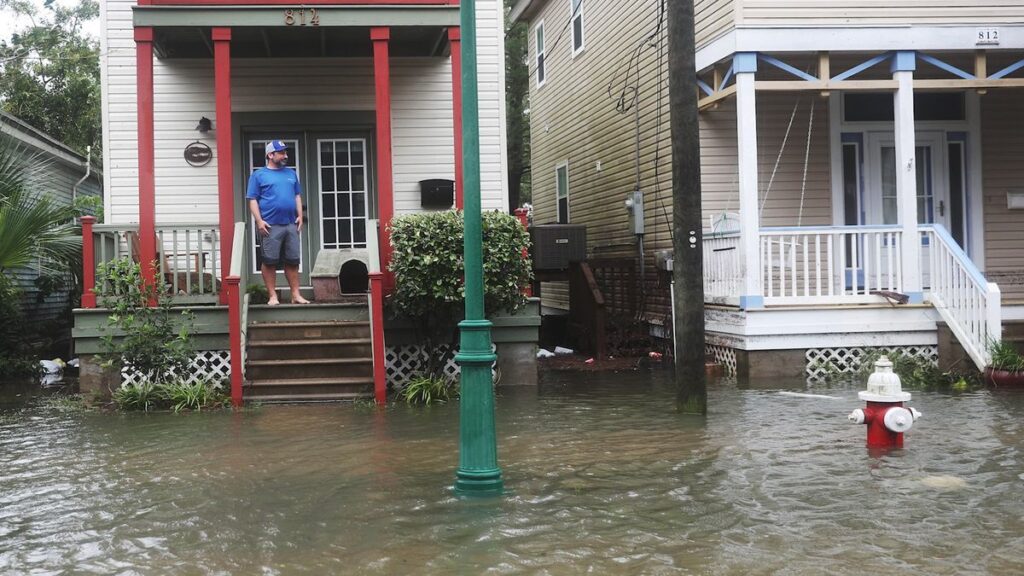
It doesn’t take an actual flood to destroy a home’s value — the risk alone is already draining Floridians’ property investments, according to separate reports from McKinsey Global Institute and the National Bureau of Economic Research.
The lesson: The typical American homeowner has most of their savings tied up in their homes. Losses hurt, but they hit the whole state economy, too — 22% of which depends on real estate.
- When home values drop, so do tax revenues, leaving less funding “for fire, police, education and our schools, etc,” Chris Jones, Escambia County Property Appraiser, told us.
- Add hurricane damage and the long-term toll on “people’s pocketbooks and their livelihoods” can skyrocket, from rising insurance rates to the cost of construction.
- Every year, Florida homeowners lose $2 billion to storm surge damage, an average McKinsey forecasts will rise “absent adaptation and mitigation.”
Another risk: Nearly 250,000 homes in Sally’s path weren’t required to have flood insurance because they weren’t listed on FEMA’s outdated flood maps.
- Even the 14% of Escambia homes with coverage could lose value because of the blight that flood-damaged homes have on a neighborhood.
Snapshot: Living through it
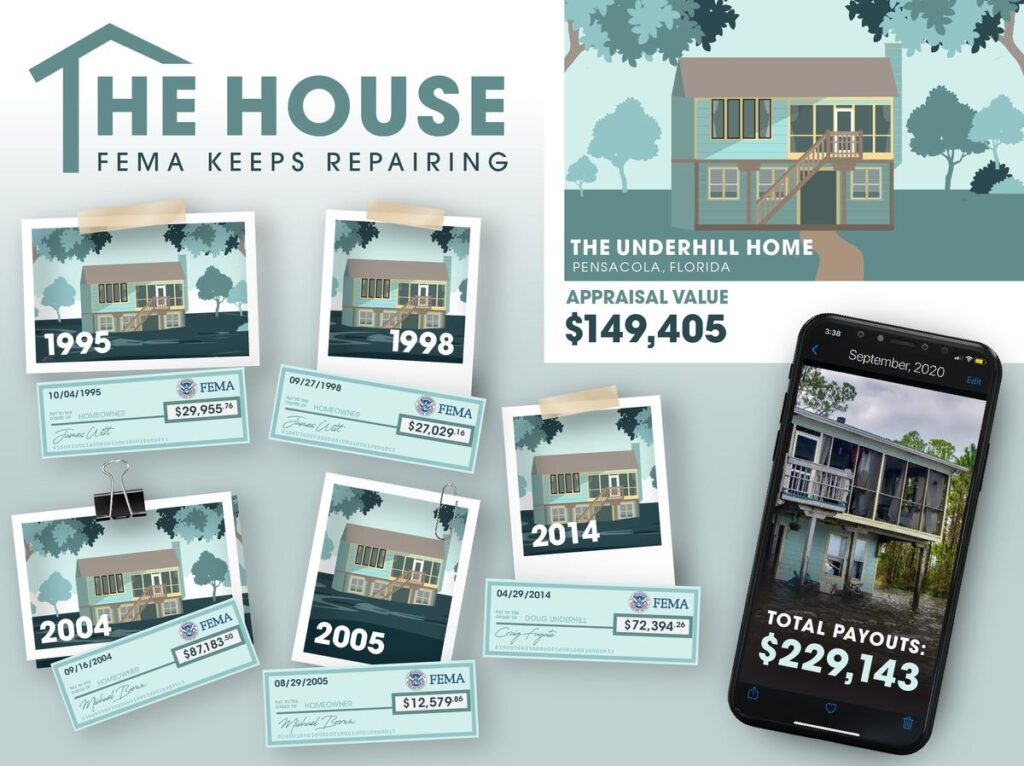
NFIP payouts to date, not including the Underhills’ pending 6th claim.
County Commissioner Doug Underhill’s home has had six National Flood Insurance Program (NFIP) claims — none of which paid out the full amount needed to rebuild a flood-fortified house.
- If NFIP approves the sixth as a full payout, total claims will amount to nearly half a million dollars on a home valued at $149,000.
For context: Escambia is a tenth as populous and a third as big as Miami-Dade, but draws nearly double the repetitive, severe loss payouts — $101 million to $52 million.
📺 See the moment the Underhills waded back into their home after Hurricane Sally.
3. Where homeowners are demanding action…
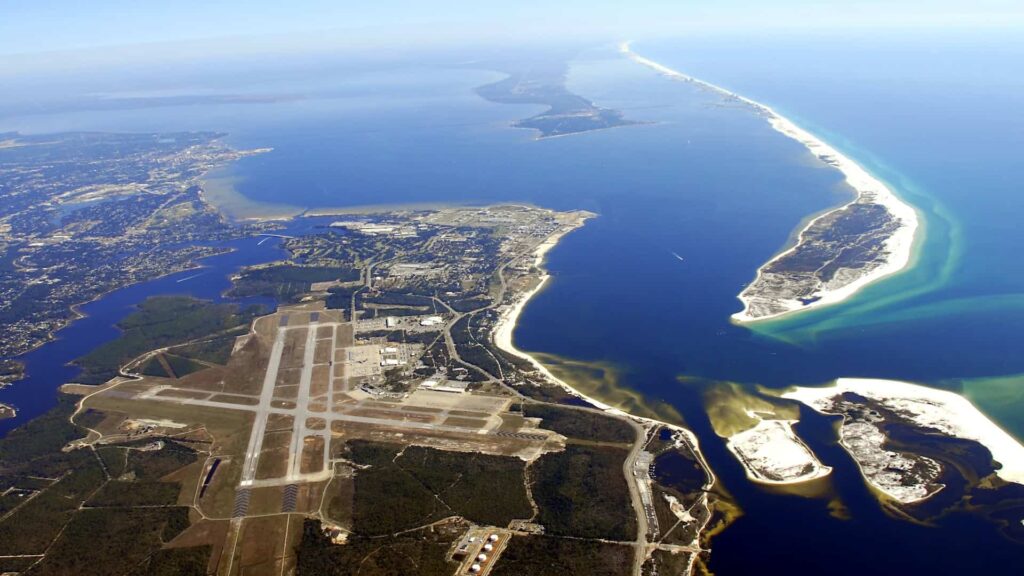
Warrington is home to Naval Air Station Pensacola and many retired enlisted sailors and aviators. (Credit: Kevin King)
A single dollar invested in flood prevention saves up to $7 in flood repairs, according to the National Institute of Building Sciences, and two Escambia communities are proof.
- Both success stories hinged on local leaders working with residents and partners to make a plan, defray costs and get the job done.
In Beach Haven, years of frequent flooding let raw, toxic sewage seep in from outdated septic systems.
🔧 The fix: By agreeing to a cost-sharing plan, the county was able to upgrade drainage and retention ponds while the utility authority converted septic systems to sewers.
- During the 2014 floods, “every single road in there just collapsed,” County Commissioner Doug Underhill told us.
- Come Sally in 2020 and “the houses did not flood. The neighborhood did not flood. And the roads and everything are in great condition.”
In Warrington, rampant 2014 flooding added urgency to a stormwater plan designed to save houses and evacuation routes, even if streets or yards flooded.
🔧 The fix: The county started buying neighborhood ponds from HOAs and calibrating when they overflowed to avoid flash flooding.
- After losing three bridges in 2014, “not a single road was impassable, not a single bridge was destroyed or damaged” in 2020, said Underhill.
The catch: The ongoing protections for both towns depend on whether officials commit the funds needed to maintain them.
4. …And where one HOA got in the way
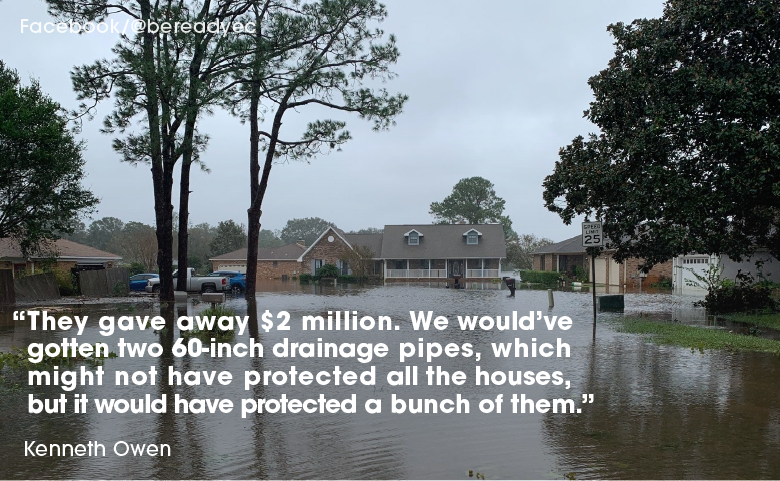
Almost half of the 275 homes around Pensacola’s Lake Charlene flooded in 2014, yet the HOA turned down a $2.1 million FEMA grant that required them to keep the lake nine inches lower so it could absorb more runoff.
- Their objection: The HOA wanted an “aesthetically pleasing” lake, not a “mudflat,” and complained the plan protected 86% of homes, not 100%.
Background: Lots of Florida subdivisions include drainage ponds to prevent flooding. But in a sudden downpour, runoff flows into Lake Charlene faster than it can drain out.
- What could have been: FEMA’s funding would have paid for new outflowing drainage pipes to prevent repeat flooding when Sally struck in 2020.
- What happened: “I’ll never get the value of the house back,” said one resident whose home flooded twice. “Who’s going to … buy a house when nobody’s doing anything to prevent flooding?”
A similar story played out in Perdido Key, a slowly eroding barrier island that buffers the storms that batter the mainland. Locals rejected a state plan to bring in new sand because their exclusive beaches would become public property.
5. What gets funded when flooding isn’t
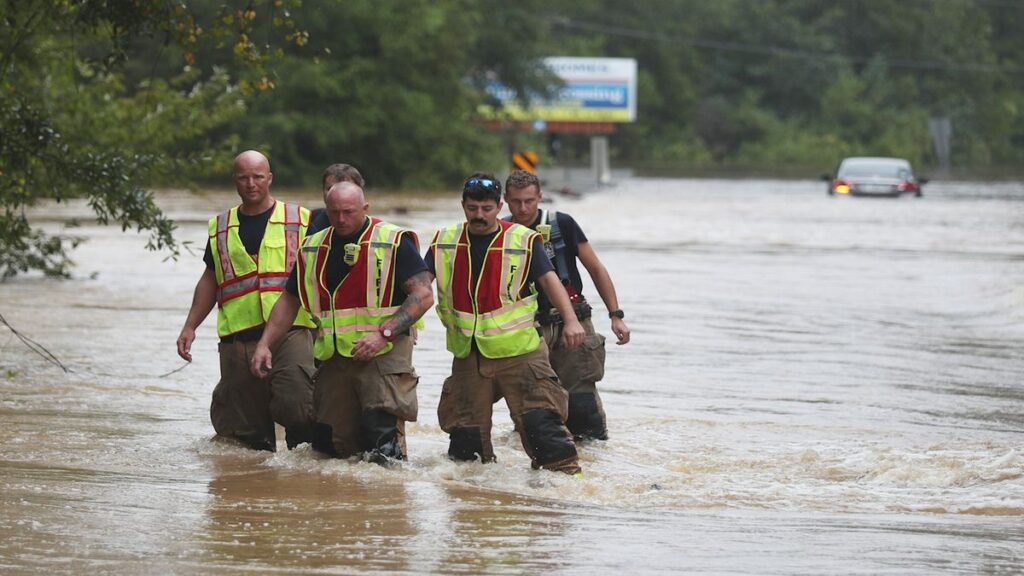
After a Pensacola jail exploded due to the 2014 floods, county officials applied for a $7 million FEMA grant to improve drainage in the area.
- Meanwhile, they budgeted $132 million to build a new jail, in the same vulnerable floodplain as the old one.
- Six years later, still waiting on FEMA, Sally dumped almost two feet of water on the same area — racking up over $308 million in damages.
Prevention isn’t just cheaper than rebuilding, it can shield taxpayers from liabilities — like a $17.5 million class-action settlement for those killed and injured in the 2014 blast.
The takeaway: Solutions like drainage ponds and floodplain restoration can take millions in funding and years in planning and permitting — but above all they require people to prioritize them.
